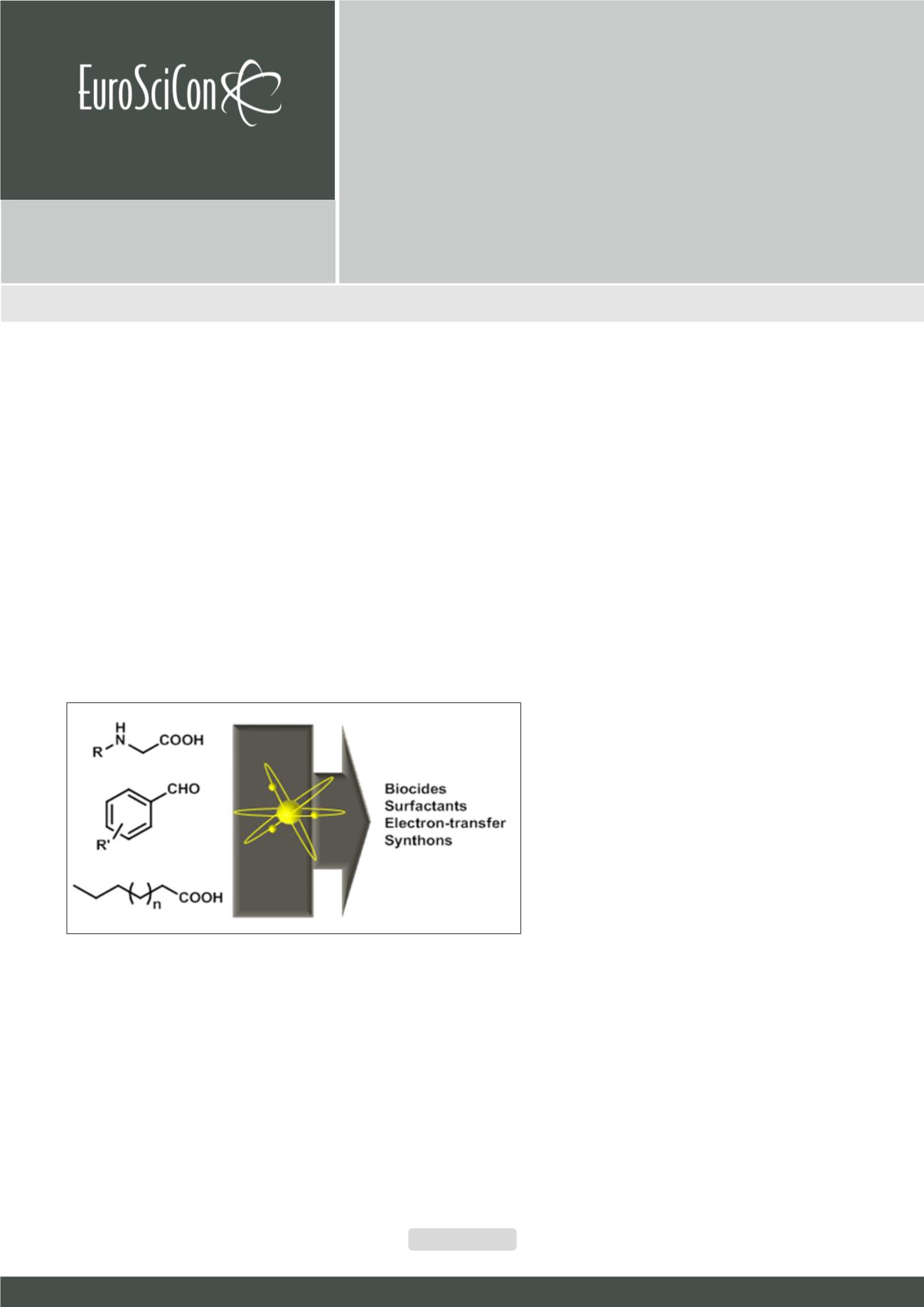

Page 21
Journal of Organic & Inorganic Chemistry
ISSN 2472-1123
2
n d
E d i t i o n o f E u r o S c i C o n C o n f e r e n c e o n
Chemistry
F e b r u a r y 1 9 - 2 0 , 2 0 1 9
P r a g u e , C z e c h R e p u b l i c
Chemistry 2019
R
adical chemistry is of great interest in many chemical areas, such as
medicinal chemistry, material chemistry or polymers, or even formulation, in
order to understand and prevent radical disorders. However, despite the lasting
interest in performing radical syntheses, the use of innovative techniques for
a more eco-friendly approach remains occasional. We will focus on examples
showing how natural products can undergo radical transformations under
innovative techniques. It will be shown that the combination of uncommon
energetic devices with greener solvent can shorten reaction times, or even
promote the envisioned reaction. By using aromatic aldehydes, (un)modified
amino acids or fatty acids, the molecules from such radical processes can be
used in a wide range of applications. Biocides, surfactants, electron-transfer
materials or even synthons are real options for molecules valorization.
Biography
Estelle Banaszak-Léonard has received her PhD from Lorraine
University in Polar Organometallic Field. Then, she moved to
Birmingham (UK) University for her first Postdoctoral position
, followed by a second one in Le Mans University, where she
began to study azobenzenes for the CNRS Center. Since 2008,
she is serving as an Assistant Professor in ESCOM/TIMR in
Compiègne and in charge of the Organic Team from 2017.
e.leonard@escom.frCan innovative chemical technologies improve radical chemistry?
Estelle Banaszak Léonard, C Imbs and V Jeux
ESCOM-UTC, France
Estelle Banaszak Léonard et al., J Org Inorg Chem 2019, Volume: 5
DOI: 10.21767/2472-1123-C1-020
















